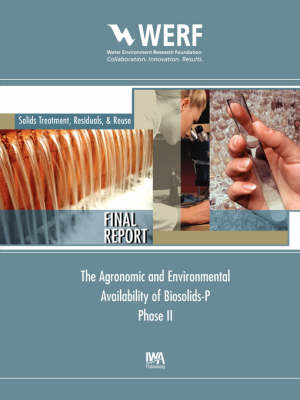WERF Research Report
2 total works
Characterizing Phosphorous in Biosolids, Commercial Fertilizers, and Manures (phase 1)
by George O'Connor, H. A. Elliot, D. A. Graetz, D. Sarkar, and S. R. Brinton
Published 1 December 2002
Laboratory and greenhouse studies were conducted to characterize P forms, solubilities, and bioavailabilities in 12 biosolids, 3 animal manures, and a commercial fertilizer (TSP). The biosolids represented a variety of treatment and stabilization methods. Manures included dairy, poultry, and poultry litter. Two acid Florida sand soils of low and moderate P-sorbing capacities, and both deficient in available P, were used as growth media for a common pasture grass (bahiagrass). Amendments were applied at total P rates to meet the P needs (low P-rate) or the N needs (high P-rate) of bahiagrass. Grass was grown from seed in greenhouse columns that allowed both relative P-source bioavailability and leachability to be evaluated. Inorganic P forms dominated all P-sources (c.80% of total P), including biosolids produced in the biological phosphorus removal (BPR) processes. Inorganic P was primarily in Fe- and Al-associated forms, except in two biosolids products, manures, and TSP, where Ca- and Mg-associated forms dominated. Following reaction with soil, P was primarily associated with Fe- and Al-P forms regardless of initial P-source. Above ground plant uptake of P served as the measure of P bioavailability, and was linearly regressed against applied (total) P-rate. Relative P bioavailability was determined by statistically comparing regression slopes of the organic sources of P to the slope for TSP. Phosphorous sources tended to segregate into three categories of similar bioavailability: 'high', 'moderate', and 'low'. Biosolids produced via BPR tended to be as available as fertilizer-P, and constituted the members of the 'high' bioavailability group. The 'moderate' bioavailability category included most of the biosolids tested (representing most biosolids produced nationally), and had an average relative bioavailability of 46%. The 'low' bioavailability category included biosolids and manures with greater than normal total Fe and Al (e.g. > c.30-40 g kg -1), or whose form (pellets) or associated salinity and/or alkalinity likely confounded bioavailability interpretation. Leached P was dominantly inorganic, and was much less from most biosolids than from TSP. In the poorly P-sorbing Immokalee soil, two BPR materials lost from 0.73 to 11% of the total P applied (value depended on rate and form), but no other biosolids lost > 0.42% of the applied P. About 20% of the TSP-P (high rate) was lost from this soil. In the moderate P-sorbing Candler soil, P leaching losses were much less: leaching losses of TSP varied from 1.7 to 21.7% (low and high P-rate, respectively), and no biosolids (including the BPR materials) lost > 0.45%. Apparently, differences in biosolids P leachability are effectively masked by soils with even moderate P-retention capacity. Manure-P was generally more leachable ( or = 4.3% lost) than biosolids-P (except the BPR materials), but significant differences were limited to the high-P rate on the Immokalee soil. No manure lost > 0.87% of applied P in the Candler soil. Biosolids-P leaching in the Immokalee soil was related to the P saturation index (PSI = [Pox] / [Alox + Feox]) of the biosolids. For biosolids with PSI or = 1.25, no appreciable leaching occurred. Only BPR biosolids (PSI = 1.3 - 2.7) resulted in significant P leaching. Co-applying water treatment residuals (WTRs) with high soluble P sources can effectively eliminate leaching in soils where drainage P is a justifiable concern. Greenhouse data need validation under field conditions, but limiting biosolids applications to rates based on P crop needs appears unnecessary to minimize P leaching concerns except for BPR materials on the poorest of P-retaining soils. This publication can also be purchased and downloaded via Pay Per View on Water Intelligence Online - click on the Pay Per View icon below
Agronomic and Environmental Availability of Biosolids-P (Phase-II)
by George O'Connor
Published 1 January 2007
Concerns about water quality degradation resulting from land appliation of manures and biosolids have elicited a wide array of national and state regulations. The regulations focus on P as the limiting nutrient to eutrophication of most freshwater supplies and threaten to severly impact biosolids recycling. Critical data about biosolids-P phytoavailability and run-off potential, especially field data, needed to validate the regulations are scarce. The goal of this reseach was to supply such data. Conventionally treated biosolids exhibit both less agronomic and environmental impact, such as co-application with water treatment residuals (WTF).

